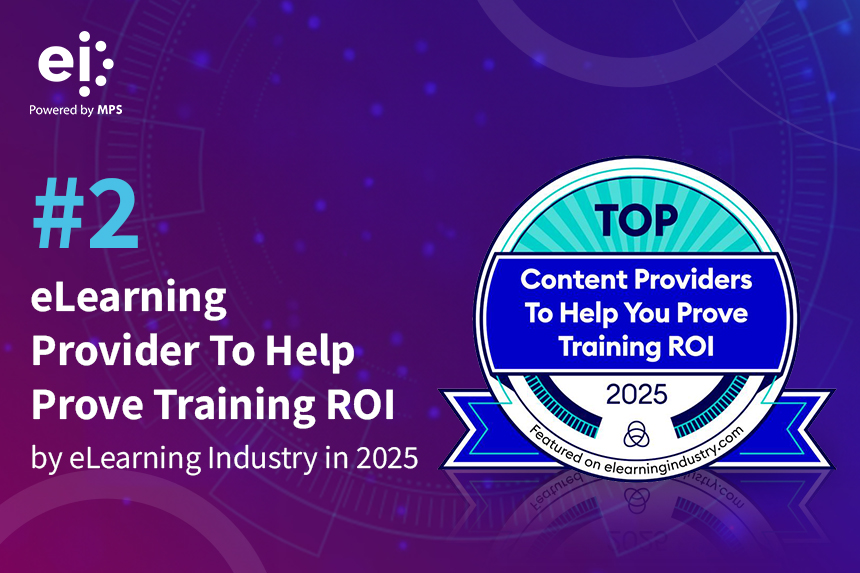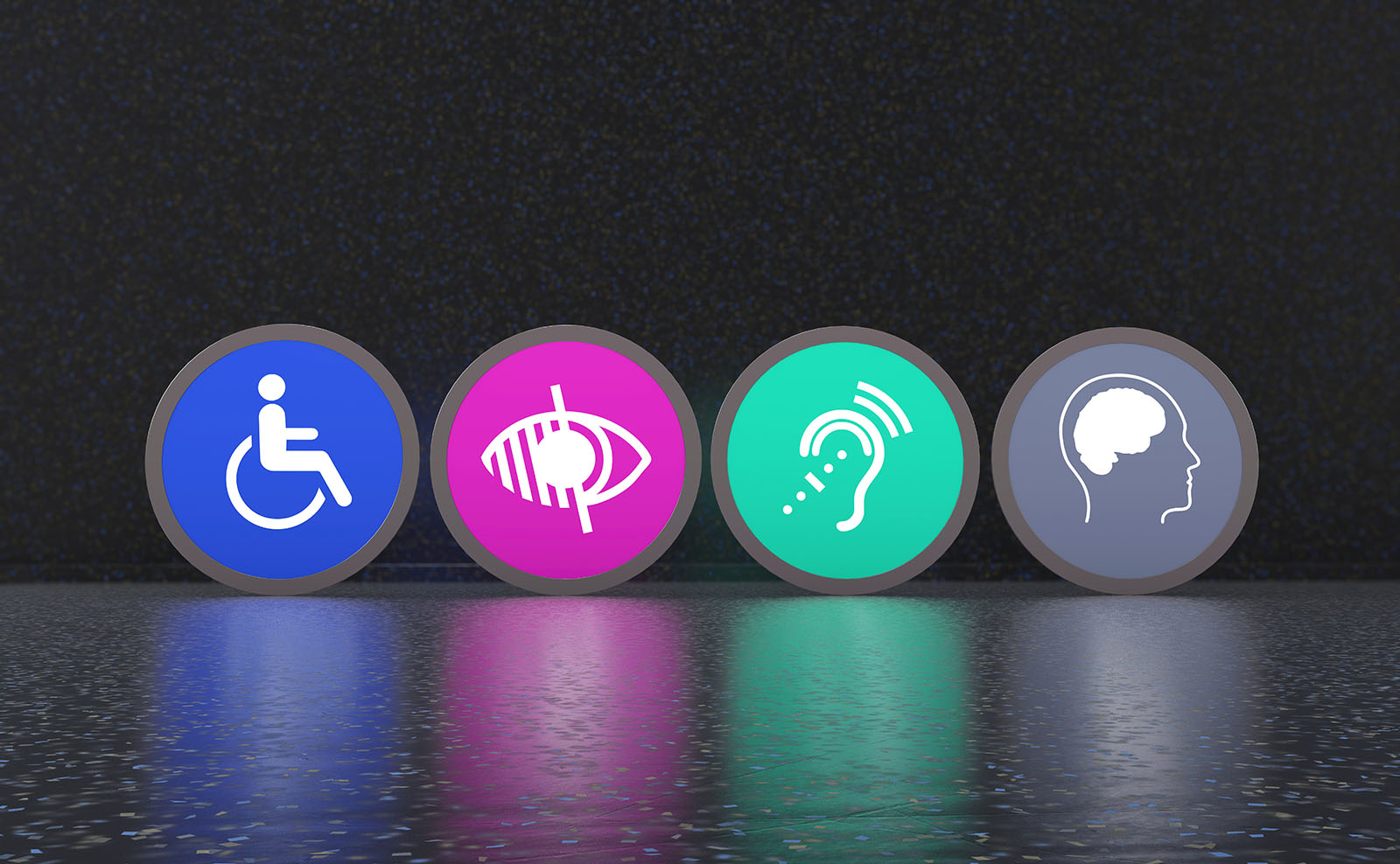
In today’s dynamic and evolving work environment, employees often feel disconnected. As organizations lean toward a skill-based model, there is an increasing emphasis on right-skilling to meet the diverse needs of generational learners. This article will highlight how you can use immersive learning to bridge gaps between learning and performance, drive behavioral change, and build a more connected workplace.
Immersive Learning Experience Defined
Immersive learning forms engaging environments using VR, AR, simulations, and AI to simulate real-world experiences. Today’s skill-based organizational landscape requires the right-skilling to meet the diverse needs of generational learners, and immersive learning plays a major role. By enabling active learner participation and decision-making, it not only enhances critical thinking and skill development but also addresses the specific learning preferences of different generations. This approach aims to make learning more realistic and long term when compared to traditional methods.
Key Factors to Consider While Creating an Immersive Learning Experience
When creating an immersive learning experience, key factors to consider include:
- Engagement: Ensure the experience captivates and maintains the learners’ attention.
- Relevance to Skilling Needs: Align activities with required job skills and competencies.
- Effectiveness: Design activities to meet clear, measurable learning goals with practical applications.
- Tracking and Assessment: Implement tools to monitor and assess learners’ performance and growth.
- Budget: Ensure cost-effectiveness and alignment with budget constraints.
- Infrastructure: Confirm availability of necessary technology and support.
- Industry Specificity: Tailor content to meet unique industry requirements and standards.
- Spatial Designs: Create realistic and intuitive virtual environments that enhance the learning process.
What Is an Immersive Learning Environment?
An immersive learning environment uses an amalgamation of gamified learning, simulations, and virtual 3D worlds to create engaging learning environments. Unlike traditional learning methods that have been utilized so far, this environment offers realistic scenarios that allow learners to practice skills and interact with others in a more lifelike setting.
Why Should You Invest in Building Immersive Learning Experiences for Your Learners?
Investing in immersive learning environments is highly beneficial for several key reasons. Firstly, these environments simulate real-world scenarios, allowing learners to engage in experiential learning without facing real-world consequences. This creates safe practice and exploration zones where learners can build their skills and confidence in a risk-free setting.
Another significant advantage of immersive learning is its “presence factor.” This quality helps employees connect more deeply with the learning material by creating a sense of “being there.” Traditional learning programs often miss out on this deeper engagement, but immersive learning overcomes physical barriers and provides realistic, simulated experiences that captivate and maintain learners’ attention.
By combining these elements, immersive learning environments not only make learning more life-like but also significantly enhance engagement and interest, ultimately driving better learning outcomes and stronger team connections.
On other levels, investing in immersive learning experiences deliver tangible benefits:
- It helps build emotional and cognitive thinking in the process of learning and experiencing. Technologies, like VR, AR, and Metaverse-based content, provide complete immersion, which produces a higher learner engagement quotient.
- The use of immersive learning technologies has made it possible to better integrate scientific learning principles into learning approaches. This makes learning “stickier” than traditional, non-immersive approaches.
- The integration of Big Data and learning analytics tools into immersive learning products means that L&D teams can now make better use of data to evaluate learning effectiveness and measure ROI on learning investments.
- The use of spatial design in immersive learning content helps deliver a more life-like training experience to learners. This not only increases knowledge retention but also enhances knowledge transference in the workplace.
When learners don’t find learning stimulating or feel their learning experiences are ineffective, they tend to disengage or gravitate to passive participation. The best way to address those issues is to invest in building immersive learning environments that motivate, excite, and connect learners to each other and to the learning needs.
What Are the Benefits of Creating an Immersive Learning Experience in the Modern Workplace?
Delivering immersive learning experiences promise several benefits, all grounded in a body of scientific research, including:
- Greater degree of personalized learning.
- Higher knowledge transference through the introduction of interactive “do and learn.”
- More realistic real-world learning experiences, because learners not only simulate what they’ll face on the job but they can also practice specific scenarios multiple times, as required, to gain proficiency.
- Opportunity to get learners to “fail earlier” by exposing them to a range of simulated future scenarios.
- Removing the risks associated with learning in traditional, non-immersive learning environments, such as working with hazardous chemicals, contagious pathogens, or high-risk surgical situations.
- Ability to leverage real-time data to initiate timely, data-driven learning interventions. This real-time feedback improves their real-world decision-making capabilities.
- Realizing better return on learning initiatives by giving learners the skills to positively impact business outcomes.
Employees typically encounter higher barriers to learning, and far greater amounts of interruptions and disruptions while learning. Traditional learning approaches, such as reviewing text-based lessons, listening to audio learning content, or watching a PowerPoint presentation, typically engage learners through lower levels of cognitive interaction.
These approaches aren’t as effective at “true engagement.” Immersive learning, on the other hand, uses learning technology, techniques, and content that stimulates multiple senses, thereby engaging learners at much higher cognitive levels. Learners in the modern workforce, therefore, are more likely to absorb learning content, and more eagerly participate in learning.
How Do You Create an Immersive Learning Environment and Immersive Experiences for Your Learners?
Creating an immersive learning environment that gratifies the needs of skill-based organizations, right-skilling demands, and diverse generational learners requires a strategic approach. Begin by carefully designing the immersive experience to align with your organization’s specific learning objectives and learner preferences. Adopting a learner-centered design ensures engagement and effectiveness across different generations within your workforce. Integrate these immersive learning initiatives seamlessly within existing L&D strategies to foster practical application of knowledge in real-world contexts, promoting skill development and competency.
By focusing on these aspects, you can build an immersive learning environment that not only enhances learning outcomes but also supports organizational goals. This approach ensures that your immersive experiences are not only relevant and impactful but also contribute to long-term professional development and success within your organization.
Here’s how your learning environment can deliver positive immersive learning experiences:
Immersive Content Design
- Consider learner-centricity: This requires delivering unique learning experiences to every learner.
- Tap into learner motivations: A great way to tap into learner motivation is to promote the benefit of learning opportunities wherever and whenever possible. Highlight the “WIIFM” (What’s in it for me?) value proposition – self-improvement, promotions, pay hikes, professional certifications, industry accreditation, recognition, peer respect, and brighter prospects.
- Leverage EI: Leveraging the five aspects of Emotional Intelligence (EI) – self-awareness, self-regulation, self-motivation, social awareness, and social skills and relationship management – are integral to delivering positive cognitive immersive learning experiences to learners.
- Appeal to core learner values: Ensure that your content and the learning experience appeal to a core set of learner values, including a mindset of continuous learning.
- Factor in the need to foster learner participation and engagement when you design programs:
- Include aspects of interactive learning in program design, and design scenarios and practical use cases that teams can relate to.
- Leverage the power of simulations.
- Include gentle reminders and nudges to steer learners into engagement with the program.
- Leverage performance support tools to evaluate how learners are doing as they travel down their personal learning paths.
- Factor for Accessibility and Diversity, Equity, and Inclusion (DEI): Ensure all content and environmental design elements adhere to applicable DEI standards, including Voluntary Product Accessibility Template (VPAT) and Web Content Accessibility Guidelines (WCAG).
Immersive Learning Strategies
- Choose the right strategy: The quality of immersive learning experiences is driven by your strategy. Therefore, it’s important to choose the right immersive learning strategy, whether it’s Gamification, Story Based Learning, Branching Simulations, AR/VR/ER and MR, Video Based Learning, or Scenario Based learning.
- Factor in learning on the go and learning anytime anywhere as part of a dynamic, responsive, learning design: To this end, leverage Microlearning interventions, Just-in-Time Learning, and On-the-Job Learning Tools as part of your immersive learning environment.
- Leverage real-world scenarios: The best way to ensure your immersive learning environment delivers its stated objectives, is to make it relevant and relatable to your target audience. Do that by centering learning content around real-world scenarios and use cases – and not based on hypothetical or abstract learning.
- Leverage Social Learning and learning cohorts to deliver personalized immersive learning experiences: Build and encourage the formation of learning communities so your learners can benefit from peer learning. Encourage Social Learning by organizing webinars, group discussions, seminars, subject matter expert (SME) talks, etc.
- Include aspects of real-time or near-real-time feedback into the environment: Offer opportunities to coach and mentor learners as they engage with the immersive learning program. Incorporate real-time feedback on performance, guided by the most appropriate rating scales applicable to your workforce. Map out personalized rater zones to assess the performance of each learner within your organization.
Immersive Learning Technology
- Choose a “content-driven” technology: The foundation of immersive learning lies in selecting the right technology, which dictates the content, interactions, and interventions like 360-video, animations, and podcasts.
- Use a combination of immersive technology and content strategy to enhance the impact: It’s important to use both technology and content to drive excellence in each other. This includes Gamified VR, Microlearning Based VR, Metaverse, and Augmented VR (AVR).
- Leverage LXPs to build immersive learning journeys and personalized learning: LXPs can customize the learning environment to immerse learners with the learning content. AI-powered LXPs collect and analyze data to personalize learning journeys for individuals, enhancing engagement and effectiveness.
- AI Role-Playing Simulator Platforms: Machine learning technology generates realistic responses for role-play scenarios, aiding in training for challenging situations like customer interactions or workplace conflicts.
- AI Coaching Platforms: Personalized guidance and adaptive feedback provided by AI coaching platforms optimize the learning experience, fostering skill development and progress tracking.
- Chatbots: AI-driven chatbots engage learners in conversations, offering instant, personalized assistance and enhancing interactivity in the learning process.
- Learning Analytics: AI analyzes learner data to evaluate feedback and identify areas for improvement, shaping future training initiatives for optimized learning outcomes.
- Visual Content Creation Technologies: AI-generated visual assets and simulations aid in understanding complex concepts, enhancing the overall learning experience.
- Natural Language Processing (NLP): NLP algorithms create diverse question sets and adapt difficulty levels based on learner performance, optimizing the learning and assessment process.
- AI-based Translation Engines: Instant and accurate translations provided by AI enable global collaboration and inclusivity in learning materials, enhancing comprehension.
Navigating Content Overload with AI to Deliver Meaningful Learning Experiences
With immersive and relevant content that directly applies to their roles and career goals, learners can better retain and apply the acquired knowledge to real-world situations. This also creates a sense of empowerment and fosters a long-term commitment to professional development. Personalized learning ensures that each learner receives content tailored to their specific needs and learning preferences, enhancing engagement and effectiveness.
Streamlining content and prioritizing quality over quantity is crucial for reducing content overload, delivering high-impact learning experiences, and optimizing employee time and resources. This also helps maximize effective skill acquisition, ultimately driving organizational success. Learning in the flow of work (LIFOW) integrates learning seamlessly into employees’ daily activities, ensuring they can apply new knowledge immediately, enhancing productivity and performance.
L&D should consider investing in AI-powered immersive content and curation tools that filter and deliver the most relevant learning resources to improve learning effectiveness. AI can help deliver personalized learning experiences, and maximize knowledge retention and application, while saving time and resources. Quick TAT (Turnaround Time) ensures that updated content reflecting the latest industry trends and best practices is swiftly integrated into learning modules, keeping the workforce informed and competitive.
Immersive Training in Action – Featuring 5 Examples of Immersive Learning in the Workplace
Immersive Learning Example #1 – Induction and Onboarding Training
One of the world’s largest food and beverage companies wanted a comprehensive onboarding solution to equip the geographically dispersed workforce with a holistic view of the organization, its key departments and stakeholders, along with the products and services offered by them.
So, we created a complete web-based solution that included a 360-degree exploration of the organization. The solution offered:
- Accessibility anywhere – Learners just needed internet connectivity and no special gears to access it
- 360-degree exploration – We leveraged 360-degree images which were stitched together to create a realistic virtual tour
Impact: A seamless onboarding experience for new joiners with a positive impact on knowledge gain and overall experience.

Immersive Learning Example #2 – Product Awareness Training
The requirement was to equip the employees with an in-depth knowledge of their organization’s product portfolio.
We developed an innovative app that leveraged Augmented Reality (AR) for an engaging learning experience.
Here’s how it helped the employees and the organization:
- Immersive product exploration – Employees could navigate a virtual store environment using their smartphones or tablets. This built inquisitiveness in them and fostered a sense of discovery.
- On-demand knowledge – By simply selecting each product, employees got instant access to key information like product descriptions, key features, and benefits.
- Time-saving – The need for dedicated training sessions was eliminated by providing the employees with the ease of ‘anytime anywhere information’.
- Enhanced knowledge retention – The AR experience promoted active learning and improved knowledge retention.
Impact – The learners gained instant access to product details through the AR app, boosting their confidence and transforming them into product experts, ultimately benefiting the organization’s efficiency.

Immersive Learning Example #3 – Customer Service Training
The purpose behind this course was to create a training for the customer facing employees where they learn to handle customer queries or difficult situations.
We adopted a web-based and roleplay with AI avatars strategy to create situations for the learners to deal with. This innovative solution leveraged several key elements:
- Adaptive branching scenarios – Branching scenarios ensured that the learners encounter a variety of situations, from common inquiries to complex challenges, allowing them to hone their problem-solving skills.
- Realistic interactions – The AI avatars delivered responses that mimicked real-life customer interactions, preparing the learners to handle the nuances of customer service in a realistic setting.
- Personalized feedback – Depending on the options selected, learners received personalized feedback which helped them to identify areas for improvement and refine their customer service skills.
Impact – This solution equipped the employees with the confidence and skills to navigate complex customer situations and boost customer satisfaction and loyalty for the organization.


Immersive Learning Example #4 – Compliance Training
One of the largest sports leagues in the world wanted to develop a mandatory training for its players on code of conduct policies as they often get exposed to vulnerable situations.
Keeping the busy schedule of the players in mind, we designed a cutting-edge scenario-based learning complemented by Virtual Reality (VR) to build the excitement. This innovative approach addressed the unique needs of professional athletes by offering:
- Scenario-based learning with VR immersion – Realistic, 3D-rendered scenarios simulated real-life situations where the players encountered difficult decision-making situations. This left them with a better understanding of the potential consequences and reinforced ethical decision-making.
- Easy accessibility – This training eliminated the need for additional plugins or downloads, allowing the players to access the training seamlessly at their convenience.
- Microlearning through scenario bursts – Content was delivered in bite-sized, scenario-triggered bursts, keeping the training engaging and efficient.
Impact – Players were empowered with knowledge and awareness, which helped in safeguarding the integrity and the reputation of the entity.

Immersive Learning Example #6 – Business Technique Simulation
The need for creating this learning solution was to empower the sales leadership to make sound decisions under pressure.
We developed a branching simulation where the learners were given multiple choices and depending on their choices, they would get realistic business outcomes. This innovative solution offered the following benefits:
- Safe space for experimentation: Learners got the opportunity to practice in a safe space which allowed them to explore different options, experiment with strategies, and receive immediate feedback without real-world consequences.
- Real-time performance insights: For each decision made and business outcome, the learners received personalized feedback which helped them to understand the impact of their decisions and refine their leadership skills.
- Active participation and gamification: KPI-based scoring and gamification elements reinforced positive learning behaviors.
Impact: This immersive branching simulation equipped sales leaders with the strategic decision-making skills to drive sales growth in their respective teams and at an organizational level, ultimately boosting the organization’s performance and empowering their teams to achieve success.

Parting Thoughts
Before you begin planning and developing immersive learning experiences for your workplace, there’s one golden rule to remember: While cutting-edge learning technology, such as AI, VR, and AR, provide the underlying basis for immersion, building an immersive learning environment should not be your only goal. True immersive learning requires both the overarching technical architecture as well as compelling and engaging content. Focusing on one aspect of the solution, at the expense of the other, is likely to result in a limited return on your immersive learning investment.
Additionally, investing in immersive learning experiences goes beyond technology. It involves understanding learner motivations, designing scenarios that reflect real-world challenges, and integrating continuous feedback loops. By doing so, organizations can bridge gaps between learning and performance, drive behavioral change, and foster a more connected workplace.
I hope this article provides the required insights on how you can use immersive learning to bridge gaps between learning and performance, drive behavioral change, and build a more connected workplace.



